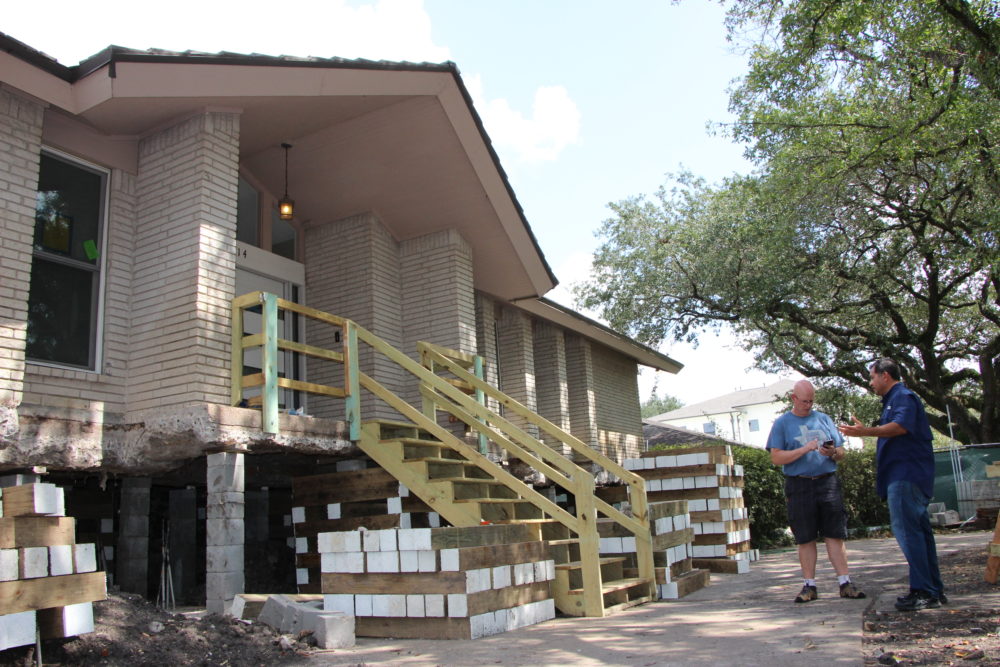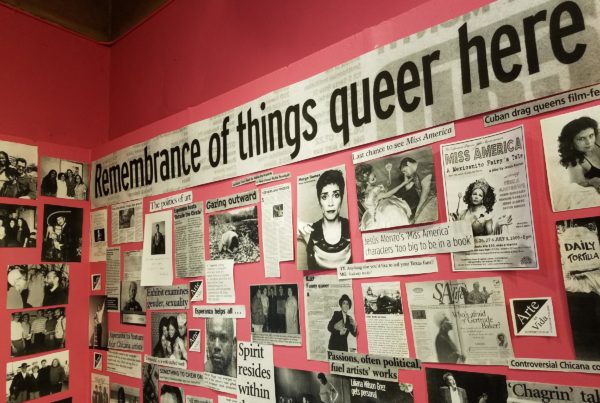City Officials say 80 percent of Houston was built before flood plain maps were even developed. Many properties that fall in those plains have been subject to three flooding events, in as many years. Now, one answer to mitigate repetitive flooding is home elevation. But, the way upward isn’t always straight forward.
Jennifer and Randy Claridge have been through a lot.
“It is really hard, it feels constant. And yes, we lost everything that we owned. We lost all of our furniture, toys and books, all of that stuff, again,” Jennifer Claridge says. “It was heartbreaking seeing that. It was heartbreaking to see my house torn down to studs.”
Claridge says their Meyerland home has flooded every year, since 2015… and they’ve been navigating the FEMA elevation grant process, ever since.
“We are just waiting….We can’t move back in here until this thing has been lifted,” Claridge says. “And, secondly: Yes, having to advocate, having to make those calls… But most of it is just trying to keep up with everything that has to get done in a day: adjusters, and FEMA, and ‘Where is the grant?’”
The Claridges finally heard they were approved for their elevation grant, only days before Harvey hit.
But right around the corner, contractors at their neighbor’s home got his house up; just one day before the massive storm.
“I definitely have a mixed swirl of emotions. I’m ecstatic that we beat the flood. That’s amazing,” says Meyerland homeowner Drew Shefman. “But my heart aches for my entire community. We didn’t flood personally, but everyone I know flooded.”
Shefman said he was done waiting for his FEMA elevation grant application, and self-funded his own elevation.
“The whole process needs to be evaluated differently. What’s currently in place is not sustainable for what needs to happen,” Shefman says. “It takes too long, too much red tape, too much paperwork. No humanity in the traumatic events that have already taken place. It’s months of paperwork and months of not hearing anything. And it’s all terrible.”
Shefman’s contractor, Phillip Contreras, is one of a handful of contractors in Houston who are qualified to do private and FEMA grant lifts.
“Currently, right now, we’ve got seven City of Houston jobs, sponsored by FEMA, and then two private jobs going on,” says Contreras, owner of Arkitektura Development Inc. “Almost anything we touch could be lifted….Elevating houses has been going on for years. I mean, they elevated all of Galveston in the 1900s. It’s just the process has developed more and more, over time.”
Contreras said you can even find 18-foot elevations, over in Galveston. And he said the overall process generally takes about four to five months.
“Up to about five feet, it runs roughly about $75 a square foot. On high rises, it could range anywhere from $110 to $130. And it’s really going to depend on what the people want. Ya know, some people may want just basic code with basic stairs to get in their home,” Contreras says.
But some people can’t settle for the bare minimum, because of homeowners’ association restrictions.
“The purpose of these grants is to get homes out of harm’s way. To get them high and dry. It’s not necessarially to beautify them,” said Jamila Johnson, Managing Engineer for the City of Houston’s Floodplain Management Office.
“It may not be acceptable to your homeowner’s association that you have five foot platform with wooden stairs as your front porch now,” says Johnson. “It may not be acceptable to you or your HOA that that your house is now up on concrete block columns instead of sitting on the ground, like all your other neighbors’ homes…. So all those types of costs are left to the homeowner to deal with,” said Johnson.
Johnson said funding for these types of programs is not where it should be.
“I think that it was not the best decision from FEMA to have such a low funding level for these very needed programs, that are oversubscribed every year,” says Johnson. “Houston would have liked to elevate 150 homes in 2016, but instead, we only got funding for 40.”
















